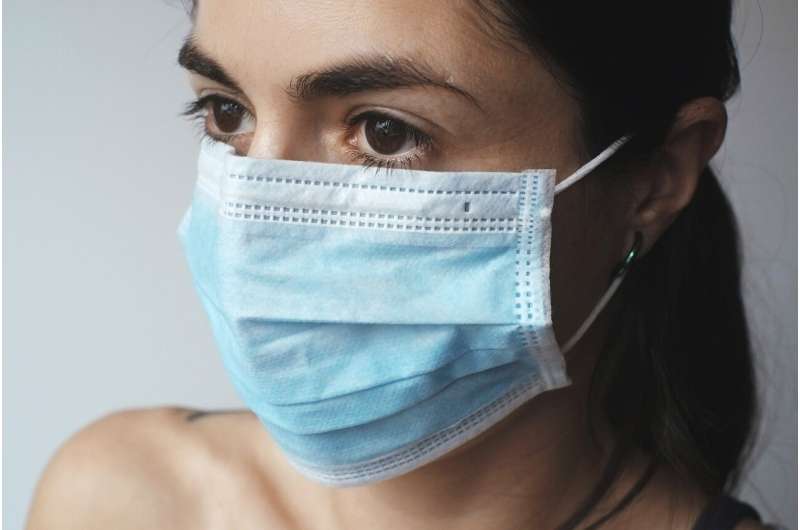
Although being fully vaccinated against COVID-19 dramatically reduces your chances of becoming hospitalized and dying from the disease, the shots don’t entirely eliminate risks of infection.
That’s why health experts have continued to urge people to practice other preventive measures—including wearing masks to benefit from an additional layer of protection during the pandemic.
But more than a year a half later, what more have scientists learned about masks’ ability to curb coronavirus spread? And are the mask types health officials first recommended still effective as more dangerous variants emerge?
Mask guidance from the Centers for Disease Control and Prevention went down a shaky road earlier this year when officials announced fully vaccinated people could ditch their masks under all scenarios, then took it back and said they should wear masks indoors in public in areas of “substantial or high transmission.” The CDC updated its recommendations following surges of coronavirus cases caused by the delta variant.
Unvaccinated people and vaccinated people who are immunocompromised should continue to wear well-fitted masks indoors in public. Masks are generally not necessary outdoors, except for areas with high numbers of COVID-19 cases.
Generally, the CDC says masks should have two or more layers of “washable, breathable fabric” that completely covers your nose and mouth. It should “fit snugly against the sides of your face” with no gaps and have a wire that bends over your nose to prevent air leakage out the top.
This criteria can include cloth masks, surgical masks, homemade ones and those with clear plastic panels to facilitate easy communication. The CDC says you should avoid masks made of fabric that makes it hard to breathe, that have exhalation valves or vents and N95s labeled as “surgical” or “medical” masks to prioritize them for health care workers.
Proceed with caution with homemade and cloth masks
If you decide to keep wearing your multi-layer homemade or cloth mask, experts advise washing them every day. But proceed with caution.
A study published in July 2020 found that respiratory droplets traveled about 2.5 inches after passing through a homemade cloth mask, about 8 inches with a cone-style disposable mask and a little over a foot with a folded handkerchief in a lab setting. But with a bandanna, cough droplets traveled about 3 feet 7 inches—the worst of them all aside from no mask—even though the material had the highest thread count compared to the other coverings.
There are two tests that infectious disease specialist Dr. Roy Chemaly of the MD Anderson Cancer Center in Texas calls “flow and glow” to gage the quality of your mask.
One is to hold a lit match or candle about six inches in front of your face while wearing your mask and try to blow it out. If the flame goes out, you may need to upgrade your mask. The other test is to hold your mask up to a bright light; if you see through it, your mask may not be thick enough to block respiratory droplets from other potentially sick people.
A study published in September of nearly 350,000 people in rural Bangladesh found that villages assigned to wear surgical masks were about 11% less likely than villages wearing no masks to develop COVID-19 over eight weeks. Protection increased to 35% for people over 60 years old.
Villages wearing cloth masks did see fewer COVID-19 cases compared to villages sporting no masks, but the Stanford and Yale University researchers said “the difference was not statistically significant,” aligning with studies that show surgical masks can better filter germs. Cloth masks did, however, reduce the likelihood of Bangladesh residents experiencing coronavirus symptoms while infected.
“Our study provides strong evidence that mask wearing can interrupt the transmission of [the coronavirus]. It also suggests that filtration efficiency is important,” study co-author Dr. Stephen Luby, a professor of medicine at Stanford, said in a statement. “This includes the fit of the mask as well as the materials from which it is made. A cloth mask is certainly better than nothing. But now might be a good time to consider upgrading to a surgical mask.”
It’s important to note surgical masks are not designed to be reused. The U.S. Food and Drug Administration says if they are “damaged or soiled, or if breathing through the mask becomes difficult, you should remove it, discard it safely and replace it with a new one.”
Surgical masks can also lose their effectiveness over time. A study published in July 2020 found that people who mildly cough could still expel droplets up to 3 feet from their mouth while wearing a surgical mask because pressure builds inside.
Should you double mask?
When the delta variant began dominating all other versions of the coronavirus in the U.S., some health experts were suggesting people wear two masks—a cloth mask over a surgical one. The CDC never officially mandated double masks, but the agency did include it in updated recommendations.
A CDC study published in February found that wearing a cloth mask over a surgical mask—as well as modifying a surgical mask by knotting its ear loops reduced a healthy person’s risk of catching coronavirus by more than 95%.
Source: Read Full Article
